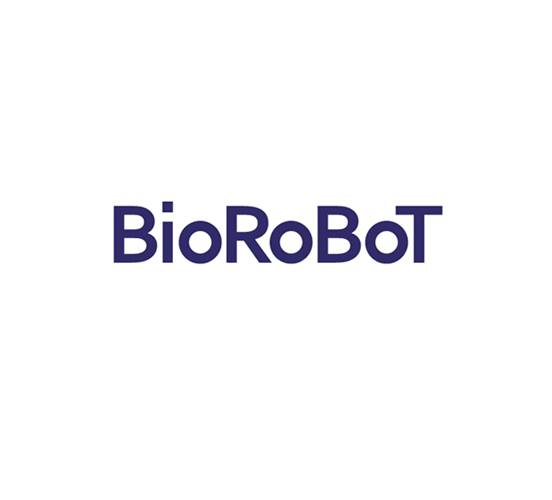The word ‘robot’ evokes images of njerëzor-like manmade metallic machine (humanoid) designed and programmed to automatically perform some tasks for us. However, robots (or bots) can be of any shape or size and can be made of any material (including biological materials such as living cells) depending on design and functional requirements. It may not have any physical form as in the case of Siri or Alexa. Robotët janë objekte ose makina të dizajnuara në mënyrë racionale që shfaqin autonomi dhe kryejnë detyra specifike.
Biological robots (or biobots) use living Qelizat or tissues as fabrication material. Like all robots, biobots also are programmable machines, display autonomy and perform specific tasks. These are a special class of active living and motile synthetic structures.
Indet e gjalla në vetvete, are not robots. They are parts of animals. The living Qelizat become robots when they are liberated from the normal constraints and programmed into desired form and function by artificially combining and shaping the cells to display specific behaviour.
Ksenobotët ishin biobotët e parë plotësisht biologjikë të krijuar në laborator në vitin 2020 duke përdorur qelizat vezë nga embrionet e një specie bretkosash të quajtur Xenopus laevis (prandaj emri Xenobots). Ishte organizmi i parë artificial i gjallë, vetë-riparues dhe vetëpërsëritës. Qelizat e gjalla u përdorën si blloqe ndërtuese që u çliruan nga kufizimet normale të pjesës tjetër të embrionit për të krijuar një formë të re të jetës artificiale, morfologjia dhe tiparet e së cilës ishin "projektuar" artificialisht. Kështu, Xenobot ishte një organizëm i gjallë sintetik. Zhvillimi i Xenobots tregoi se qelizat e përftuara nga një embrion amfib mund të programohen në formën dhe funksionin e dëshiruar duke çliruar kufizime natyrore. Megjithatë, nuk dihej nëse biobotët mund të krijoheshin nga qeliza jo-amfibësh apo të rritur.
Scientists have now reported successful construction of biobots using adult cells from non-embryonic njerëzor tissue with capabilities beyond Xenobots. This biobot has been named ‘Antrobotët’ because of its njerëzor origjinës.
Since Xenobots were derived from amphibian embryonic cells by moulding cells individually, the research team began with testing if ability to give rise to biobots is limited to these amphibian cells or, other non-amphibian, non-embryonic adult cells also can generate biobots? Further, if the seed cells need to be necessarily sculpted individually to generate biobots or if coaxing of initial seed cells also can lead to self-construction of biobots? For this, instead of embryonic tissues, the researchers used adult, somatic cells derived from njerëzor lung epithelium and were able to generate novel, multicellular, self- constructing, motile living structures without manual sculping or using any external form-giving machinery. The method used is scalable. Swarms of biobots in parallel were produced which moved via cilia- driven propulsion and lived for 45–60 days. Interestingly, it was also observed that Anthrobots moved across breaks in neuronal monolayers and induced efficient healing of defects in vitro.
Sinteza e Antrobotëve is significant because it demonstrates that plasticity of cells to give rise to biobots is not limited to embryonic or amphibian cells. It has shown that adult somatic njerëzor wild cells without any genetic modification can form novel biobots without any external form-giving machinery.
Anthrobots është një përmirësim mbi Xenobots dhe një avancim në teknologjinë përkatëse që ka implikime të rëndësishme për prodhimin e indeve komplekse për përdorime klinike në mjekësi rigjeneruese. Në të ardhmen, mund të bëhet e mundur të prodhohen Antrobot të personalizuara për çdo pacient dhe t'i vendosin ato në trup pa shkaktuar asnjë përgjigje imune.
***
Referencat:
- Blackiston D. et al 2023. Robotët biologjikë: Perspektiva në një fushë ndërdisiplinore në zhvillim. Robotikë e butë. gusht 2023. 674-686. DOI: https://doi.org/10.1089/soro.2022.0142
- Gumuskaya, G. et al. 2023. Motile Living Biobots Self-Construct from Adult Njerëzor Somatic Progenitor Seed Cells. Advanced Science 2303575. published: 30 November 2023 DOI: https://doi.org/10.1002/advs.202303575
- Tufts University 2023. News – Scientists Build Tiny Biological Robots from Njerëzor Qelizat. https://now.tufts.edu/2023/11/30/scientists-build-tiny-biological-robots-human-cells
- Ebrahimkhani Mo.R. dhe Levin M., 2021. Makinat e jetesës sintetike: Një dritare e re mbi jetën. Perspektiva e iShkencës. Vëllimi 24, Botimi 5, 102505, 21 maj 2021. DOI: https://doi.org/10.1016/j.isci.2021.102505
***






































